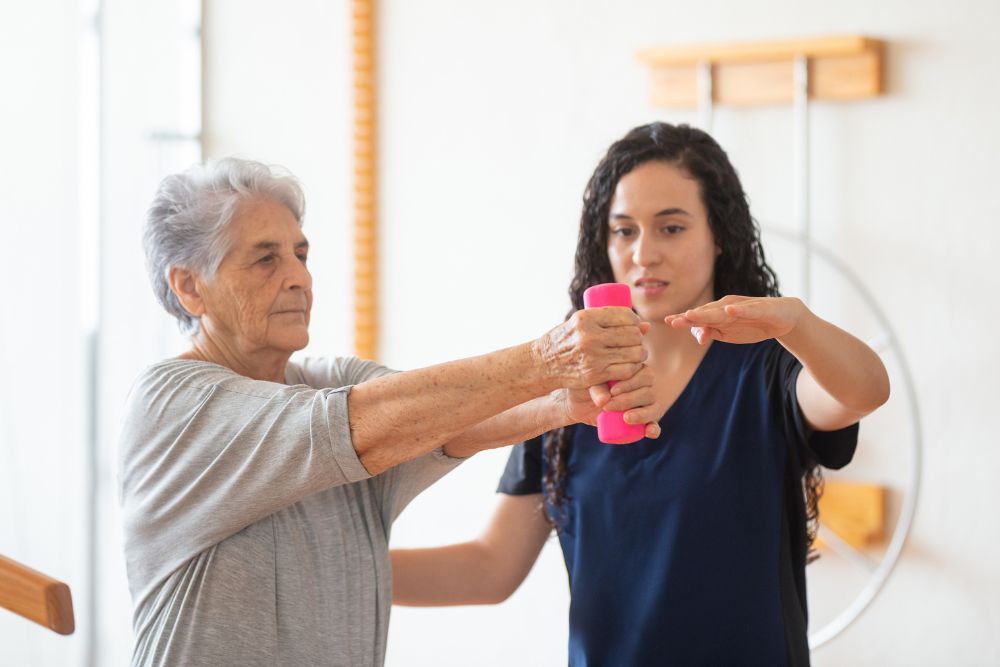
In-Home PT vs Outpatient—Which Speeds Recovery After Surgery or ICU Stay?
In-Home Physical Therapy vs Outpatient
For patients leaving surgery or an ICU stay, PT is often the bridge between hospital discharge and regaining daily life.
But families face a real-world decision: is recovery better served at home with in-home physical therapy, or in an outpatient clinic? The answer can shape safety, convenience, and even long-term outcomes.
Why This Choice Matters
The weeks after hospitalization are fragile. Studies show that patients are at the highest risk of preventable hospital readmission within 30 days of discharge. The setting where therapy happens—whether in home or at a clinic—plays a major role in whether recovery is smooth or filled with setbacks.
For many families, it’s not just about convenience—it’s about whether their loved one can stay home safely, avoid complications, and regain independence.
Does In-Home Physical Therapy Improve Recovery Outcomes?
Research points to yes. Patients recovering at home often progress more smoothly when therapy is integrated into their real environment. Studies of ICU survivors show that early mobility reduces weakness, shortens recovery time, and lowers complication rates. Similarly, post-surgical patients receiving home-based rehabilitation demonstrate fewer falls, better adherence to exercises, and lower hospital readmission rates.
Why? Because therapy in the home focuses on real-world function. Instead of practicing walking in a clinic hallway, patients practice navigating their own stairs, rugs, and bathrooms—the exact settings where falls are most likely.

What In-Home Physical Therapy Provides
When therapy comes home, it adapts to real life. Therapists see how a patient manages their own environment, which makes the exercises more relevant—and safer.
A first in-home PT session often includes:
- A safety check of the home environment (stairs, bathroom, living room setup).
- A mobility and strength evaluation.
- Creation of a customized plan for post surgical recovery at home.
- Teaching caregivers safe ways to help with transfers, standing, and exercises.
Key advantages of in-home PT include:
- Lower risk of readmission: therapists catch hazards before they become emergencies.
- Convenience: no transportation hurdles, which means fewer missed sessions.
- Personalized routines: home exercise programs for older adults are built into daily habits.
- Family involvement: caregivers learn safe transfer techniques and how to encourage exercises.
For families searching “in home physical therapy near me,” this option often provides the peace of mind of care that meets them exactly where they are.
What Outpatient PT Provides
Outpatient clinics are structured environments with specialized tools that may not fit inside a home.
A typical outpatient PT session includes:
- Access to equipment such as treadmills with harnesses, aquatic therapy pools, and resistance machines.
- Supervised exercises that increase in difficulty over time.
- Progress tracking with clinic-based tools.
Advantages of outpatient PT include:
- Access to advanced equipment: machines and therapy pools can accelerate recovery.
- Structured environment: some patients thrive on routine and the motivation of being around others.
- Insurance familiarity: coverage is often easier to navigate for outpatient visits.
This setting works best for patients strong enough to travel safely and who benefit from clinic-based technology.
Side-by-Side: In-Home PT vs Outpatient
To understand the difference, here’s a quick comparison:
| Factor | In-Home PT | Outpatient PT |
|---|---|---|
| Access | Delivered at home, tailored to the environment | Requires transport to the clinic |
| Readmission Risk | Lower—hazards addressed in real time | Higher if fatigue prevents attendance |
| Convenience | No travel; flexible scheduling | Fixed appointments; travel required |
| Equipment | Portable tools, home adaptations | Full range of rehab machines |
| Family Role | Caregivers included in training | Less day-to-day caregiver involvement |
Which One Speeds Recovery?
It depends on the patient’s unique situation.
- In-home PT is often best for older adults, those with mobility challenges, or anyone at higher risk of falls.
- Outpatient PT can be ideal for patients who are already fairly mobile, motivated by routine, and in need of specialized equipment.
The real key isn’t choosing one over the other—it’s making sure there’s structured support after hospitalization.
FAQ: Families’ Top Questions
Is in-home physical therapy covered by insurance?
Coverage varies. Medicare and many private insurers cover in-home rehab if patients qualify as “homebound.” It’s important to ask providers directly.
How long does in-home PT last after surgery?
Typical plans run 4–8 weeks, but duration depends on progress, safety, and physician recommendations.
Can in-home rehab prevent falls for older adults?
Yes. Therapists identify hazards in the home environment and teach safer ways to move, reducing fall risk significantly.
What’s the difference between home health and in-home PT?
Home health includes nursing, wound care, and other medical services. In-home PT focuses specifically on mobility, strength, and safe recovery exercises.

Signs It’s Time to Ask for Help
How do you know when it’s no longer sustainable on your own? Look for these red flags:
- Missed PT appointments due to fatigue or transportation struggles.
- Worsening pain or function with travel.
- High fall risk in the home without professional support.
- Caregivers feeling overwhelmed by lifting, transfers, or exercise routines.
If these sound familiar, it’s time to ask about in home rehab services.
The Family’s Role in Recovery
Physical therapy works best when families are part of the process. In in-home sessions, caregivers learn how to:
- Safely assist with walking, standing, and balance.
- Encourage exercises between professional visits.
- Reinforce good habits and prevent unsafe shortcuts.
This active participation not only improves outcomes but also helps caregivers feel more confident and less stressed.
Stories from Families
One patient recovering from hip surgery shared that in-home PT was “the turning point.” Instead of struggling with car rides to the clinic, therapy happened in her own living room—where she practiced climbing the very stairs that once scared her.
Another family described outpatient PT as “exactly the motivation Dad needed”—he enjoyed being around others, using the equipment, and sticking to a schedule.
Both settings can work, but the common thread was having therapy that fit the patient’s real needs.
The Future of In-Home Rehab
Physical therapy is evolving. Beyond hands-on sessions, new tools are shaping recovery:
- Telehealth check-ins allow therapists to monitor progress remotely.
- Wearable devices track steps, balance, and even posture.
- Hybrid models combine home visits with occasional outpatient sessions for specialized equipment.
At Empowered Endings, we see technology as a supplement—not a replacement—for the human connection families need most.
How Empowered Endings Supports Post-Hospital Recovery
At Empowered Endings, our in-home therapy services are built to protect patients during those fragile first weeks. We:
- Prevent hospital readmissions by addressing risks early
- Create personalized home exercise programs for older adults and post-surgical patients
- Combine physical therapy with physician oversight, nursing support, and counseling
- Equip families with the confidence and training they need to feel safe at home
It’s not just about recovery, it’s about restoring independence and peace of mind.
EDTRA: Why Families Trust Empowered Endings
Unlike standard home health agencies, Empowered Endings is led by physicians who integrate therapy, medical care, and emotional support. Because we’re not bound by insurance restrictions, we can provide the services traditional systems often overlook. Families tell us the difference is clear: better outcomes, less stress, and more dignity at home.
Conclusion: Recovery Shouldn’t Be Harder Than the Surgery
For families, the decision between in-home PT and outpatient PT isn’t about choosing “better” or “worse”—it’s about choosing what feels safest, most sustainable, and most supportive.
Healing doesn’t stop when the hospital doors close. With the right therapy in the right place, recovery can feel less like survival and more like life returning.
One Next Step
👉 Families: Book a complimentary Connection & Clarity Call—a 30–45 minute, no-pressure conversation with an expert. We’ll help you weigh in-home PT against outpatient care and design the recovery path that best fits your loved one.





